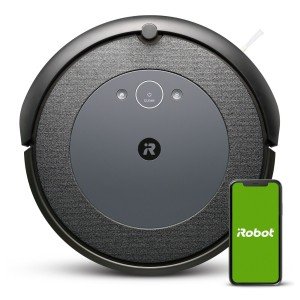Understanding Floor Robots: The Future of Home Cleaning
Over the last few years, technological advancements have substantially transformed the landscape of family cleaning. Among the most notable developments is the floor robot, a device that has actually quickly acquired popularity for its convenience and performance. This article aims to check out the different elements of floor robots, their performance, benefits, popular models, and some often asked questions to help customers make notified decisions.
What is a Floor Robot?
A floor robot, frequently described as a robotic vacuum, is an automated device developed to browse floors and get rid of dirt, dust, and debris. Unlike automatic hoover robot , floor robots run autonomously, using a problem-free cleaning experience. These smart machines utilize sensing units, mapping technologies, and advanced algorithms to clean different surfaces, including wood, tile, and carpet.
How Do Floor Robots Work?
Floor robots run through a combination of hardware and software elements. Here are the essential features that enable their functionality:
1. Sensors
- Barrier Detection: Floor robots have built-in sensors that help them find obstacles, permitting them to navigate around furnishings and avoid falls.
- Cliff Sensors: These prevent the robot from dropping stairs or ledges by acknowledging changes in elevation.
2. Navigation and Mapping
- Visual Mapping: Some advanced designs use video cameras and laser technology to produce comprehensive maps of the cleaning location.
- Synchronised Localization and Mapping (SLAM): This strategy helps the robot track its place and effectively plan its cleaning path.
3. Cleaning Mechanisms
- Suction Power: Most robotic vacuums utilize a suction system to capture dirt and dust, which is then stored in an onboard dustbin.
- Brushing Systems: Many designs come geared up with turning brushes or mops for boosted cleaning abilities, especially on carpets or difficult surfaces.
4. Smart Features
- Connectivity: Many floor robots support Wi-Fi connection, allowing users to manage them through smart device apps or smart home systems.
- Scheduling: Users can set up cleaning times, guaranteeing their homes are tidy even when they're not there.
5. Self-governing Charging
- Self-Docking: Most robots automatically return to their charging station once their battery runs low, guaranteeing they're constantly all set to tidy.
Benefits of Using a Floor Robot
The adoption of floor robots comes with many benefits that make them appealing to users:
1. Convenience
Floor robots can clean while users take care of other jobs, allowing for multitasking and time-saving.
2. Increased Efficiency
Robotic vacuums typically cover more ground in less time compared to traditional approaches, thanks to their systematic cleaning patterns.
3. Constant Cleaning Routine
Users can set up regular cleanings, guaranteeing that their homes stay clean without requiring day-to-day intervention.
4. Ease of access
Robotic vacuums can quickly access hard-to-reach locations, such as under furnishings or in tight spaces.
5. Advanced Features
Many models come equipped with functions like voice control and app combination, enhancing use and accessibility.
Popular Floor Robots
When considering a floor robot, different brand names and designs accommodate different requirements and budgets. Here's a quick summary of some leading alternatives:
| Brand | Model | Key Features | Price Range |
|---|---|---|---|
| iRobot | Roomba i7+ | Smart mapping, self-emptying dock | ₤ 600 - ₤ 800 |
| Roborock | Roborock S7 | Sonic mopping, challenge avoidance | ₤ 500 - ₤ 700 |
| Neato | Neato D7 | D-shape style, advanced suction | ₤ 600 - ₤ 800 |
| Ecovacs | Ecovacs Deebot T8 | Mopping function, advanced mapping | ₤ 600 - ₤ 800 |
| Shark | Shark IQ Robot | Self-emptying base, home mapping | ₤ 400 - ₤ 600 |
(Note: Prices may differ based on retailers and continuous promos.)
Frequently Asked Questions (FAQs)
1. Are floor robots reliable on carpets?
Yes, a lot of contemporary floor robots are developed to clean various surfaces, including carpets. Designs with strong suction and rotating brushes are especially reliable at getting animal hair and ground-in dirt.
2. How often should I run my floor robot?
This depends on your household's requirements. For homes with animals or high foot traffic, day-to-day or every other day cleaning might be advantageous. For quieter families, running the robot when a week may be adequate.
3. Can I manage my floor robot remotely?
Lots of floor robots come with mobile phone apps that allow users to control their devices remotely, schedule cleansings, and screen performance.
4. Do I require to empty the dustbin regularly?
Most robots need regular emptying of the dustbin, specifically in homes with pets or heavy soil. Nevertheless, some models offer self-emptying abilities, which lessen user involvement.
5. Are floor robots appropriate for all kinds of floor covering?
Most floor robots work on various surfaces, including hardwood, tile, and low-pile carpets. However, some may perform better on specific surface areas, so it's important to choose a design suited to your home's needs.
As households continue to accept innovation, floor robots have emerged as necessary cleaning buddies, offering benefit, performance, and advanced functions. Comprehending their performances, benefits, and available models enables customers to select the best floor robot to fulfill their specific cleaning requirements. By buying this innovative technology, property owners can guarantee their home remain tidy and comfy with very little effort.

